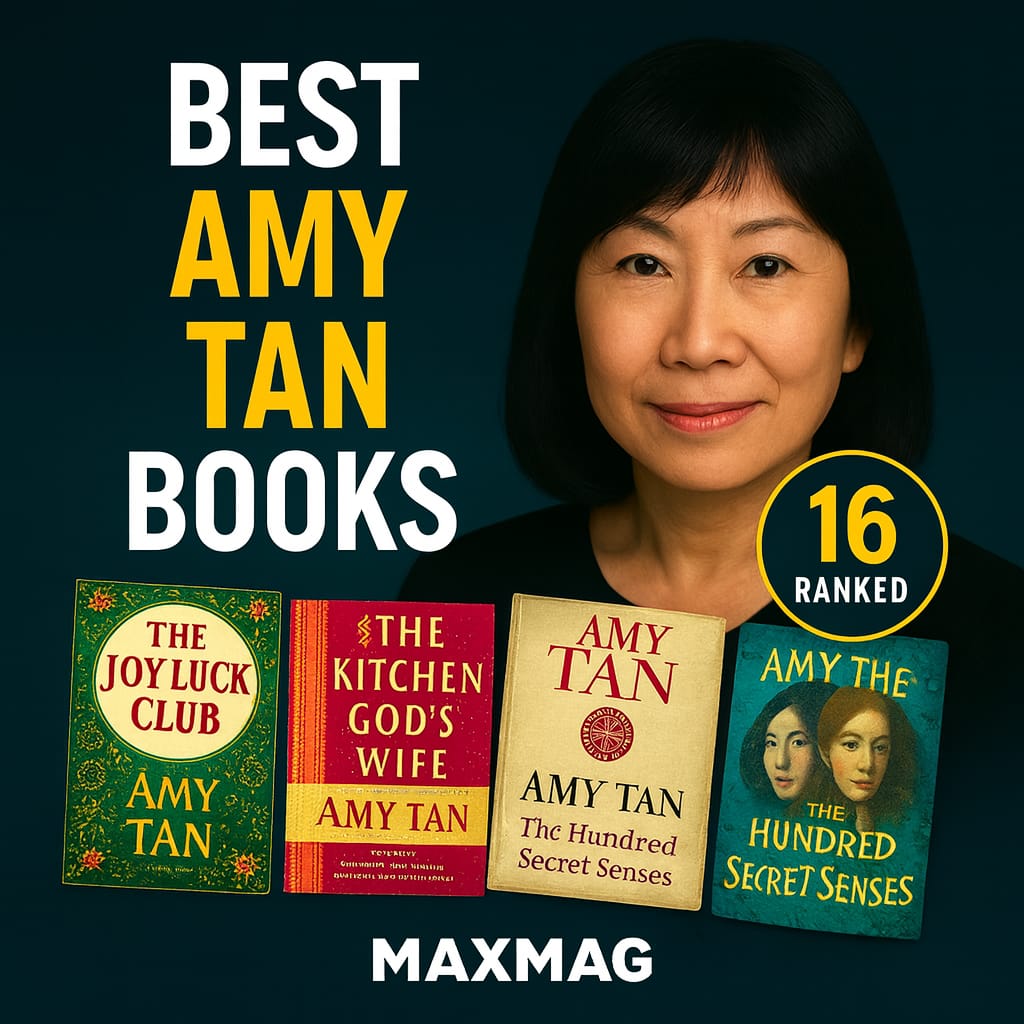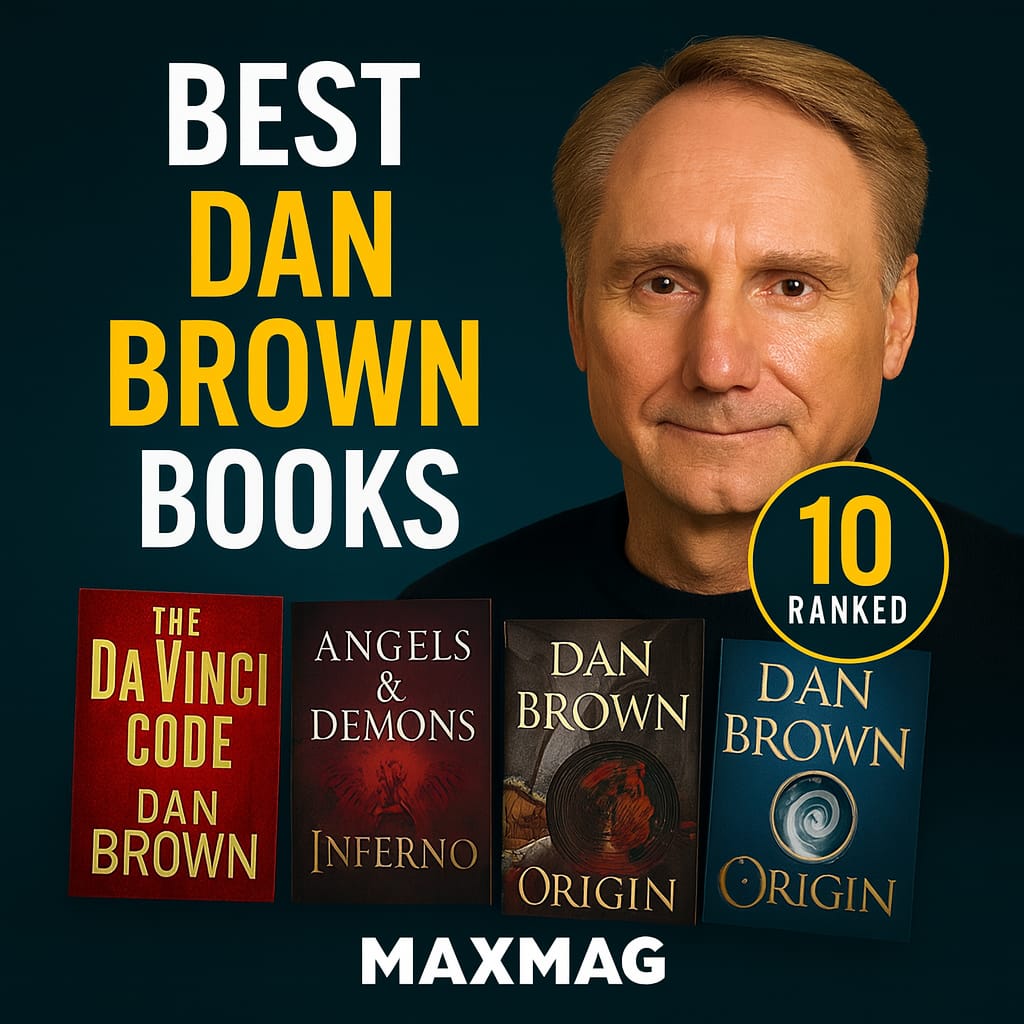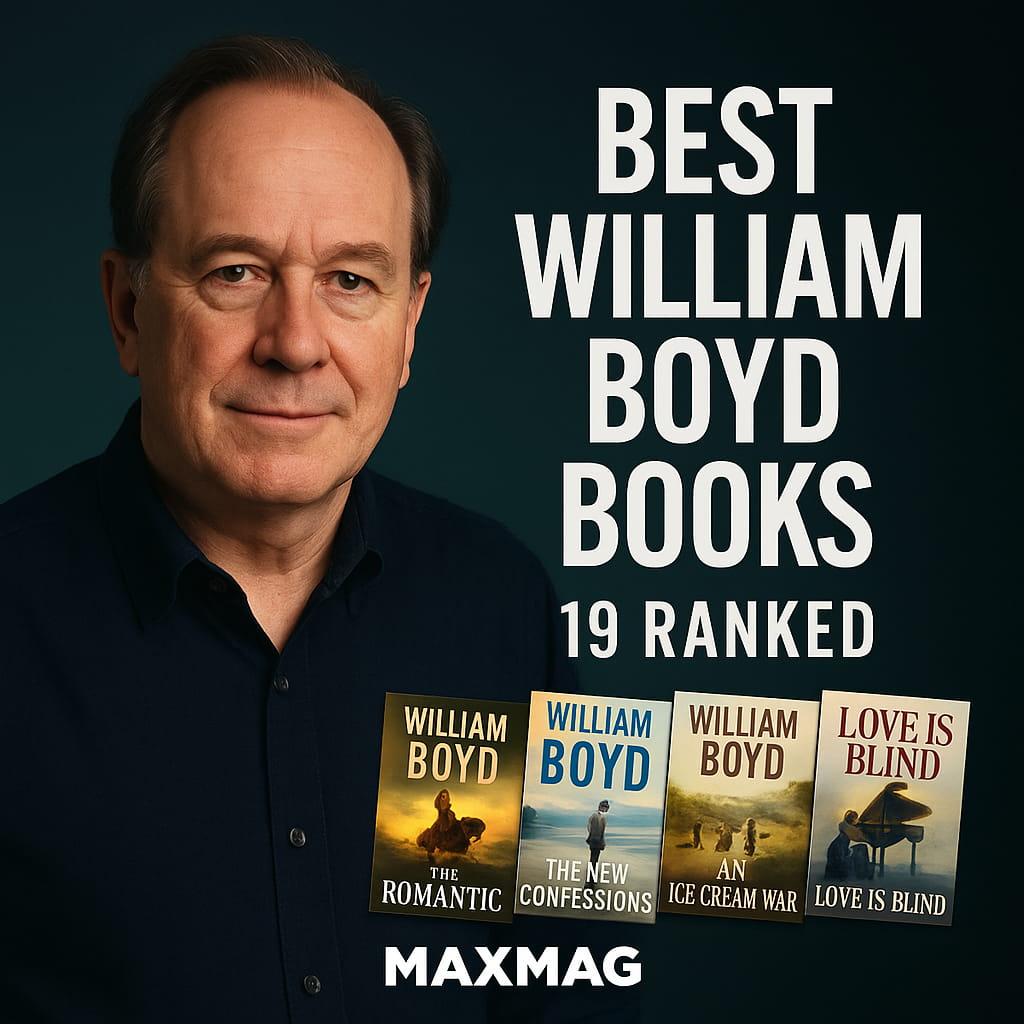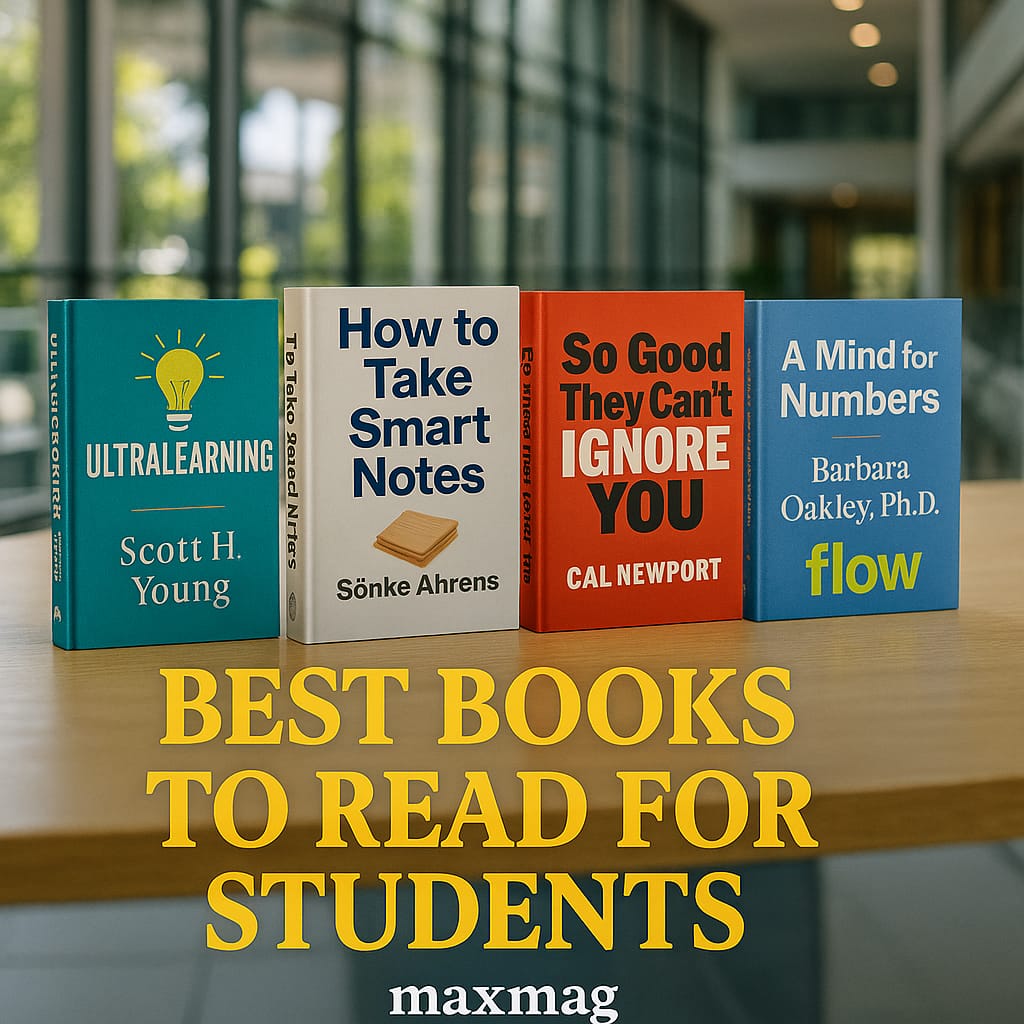
1. The Kite Runner – Khaled Hosseini (2003)
- Genre: Contemporary Fiction
- Pages: 372
- Themes: Guilt, redemption, friendship, identity
- Ideal for: Literature and ethics students
- Key takeaway: True courage begins with confronting the past.
Hosseini’s debut unfolds in Kabul and later America, tracing a fragile bond between two boys divided by class. A single act of betrayal haunts the narrator across decades, shadowing every achievement and relationship. The novel’s emotional topography mirrors a nation’s upheaval, where innocence is bartered for survival. Scenes of kite fighting become emblems of pride, shame, and the longing to be seen by a distant father. Violence arrives not as spectacle but as moral fracture, forcing readers to weigh silence against truth. Amir’s path to redemption becomes a pilgrimage through memory, guilt, and the price of cowardice. Hosseini writes with lyrical clarity, humanizing a culture too often reduced to headlines and conflict. For students, it’s a study in empathy, showing how accountability—however late—can begin to heal.
2. Life of Pi – Yann Martel (2001)
- Genre: Philosophical / Adventure Fiction
- Pages: 336
- Themes: Faith, survival, truth, storytelling
- Ideal for: Philosophy and creative writing students
- Key takeaway: Truth may lie not in facts, but in belief.
Shipwrecked in the Pacific, Pi Patel shares a lifeboat with a Bengal tiger whose hunger keeps him fiercely alive. Martel splices zoology with theology, inviting readers to interrogate what sustains the human spirit. The sea becomes a cathedral of risk and revelation, where prayer and pragmatism must learn to coexist. Mirages and miracles blur, asking whether meaning requires literal truth or a story we can bear. Pi’s rituals—charts, fish, fresh water—are survival as liturgy, discipline as a form of faith. Violence erupts in silences, reminding us that nature is indifferent to our philosophies. At landfall, competing testimonies challenge the reader to choose the world they prefer to inhabit. For students, it models resilience and the ethics of narrative: the tales we tell make us. It also appears on many books for college students.
3. The Book Thief – Markus Zusak (2005)
- Genre: Historical Fiction
- Pages: 552
- Themes: Words, war, humanity, hope
- Ideal for: Literature and history students
- Key takeaway: Words can destroy—but also resurrect.
Narrated by Death, the novel follows Liesel Meminger as she learns to read under a rain of sirens and ash. Stolen books become contraband talismans, smuggled hope in a world regimented by cruelty. Zusak’s prose is tender and incendiary, turning everyday gestures into acts of resistance. Friendship—between Liesel, Rudy, and her foster parents—renders ordinary people luminous. A hidden basement guest links compassion to danger, reminding readers how courage looks in private. Language itself is on trial, co-opted by tyranny yet reclaimed in whispered stories and snowmen. The novel asks who owns narrative power when history roars; sometimes, children answer first. For students, empathy is the lesson: literature keeps human dignity breathing in thin air. It’s widely recommended as one of the best books to read for students.
4. The Road – Cormac McCarthy (2006)
- Genre: Post-Apocalyptic Fiction
- Pages: 287
- Themes: Love, morality, endurance, loss
- Ideal for: Philosophy and environmental students
- Key takeaway: When everything burns, love remains the last refuge.
A father and son walk a gray road through a ruined America, sharing canned peaches and a thin flame of hope. McCarthy’s stripped syntax scours language to bone, leaving meaning raw and undeniable. The boy’s questions become ethics class in motion: what is goodness without witnesses or reward? Threats lurk in quiet barns and roadside ditches, where hunger distorts every human urge. Dreams carry warmth and danger—the temptation to stop, the responsibility to carry on. The landscape is a ledger of loss; the bond between parent and child is its only currency. Mercy and violence intersect in split-second choices that define the book’s moral weather. For students, it is a meditation on love as duty, tested where civilization ends.
5. The Hunger Games – Suzanne Collins (2008)
- Genre: Dystopian / Young Adult Fiction
- Pages: 384
- Themes: Power, survival, media manipulation, rebellion
- Ideal for: Political science and media students
- Key takeaway: Even in fear, integrity is the most powerful rebellion.
Katniss Everdeen volunteers for a televised death match engineered to pacify the poor and entertain the rich. Collins maps propaganda with precision, from curated narratives to weaponized spectacle. Alliance and empathy—rare commodities—become strategies more radical than aggression. Class divides are architected into geography, fashion, and food, making inequality visible on-screen. Violence is choreographed for ratings, yet private acts of care puncture the choreography. The novel asks whether survival without conscience is living or merely persistence. Katniss’s defiance grows from loyalty not ideology, a politics of protection and love. For students, it’s a case study in power, media literacy, and ethical choice under pressure. It’s widely recommended as one of the best books to read for students.
6. The Help – Kathryn Stockett (2009)
- Genre: Historical Fiction
- Pages: 464
- Themes: Race, justice, courage, gender
- Ideal for: Sociology and cultural studies students
- Key takeaway: Speaking truth can change history—one voice at a time.
In 1960s Mississippi, Black maids and a young white writer risk everything to publish forbidden stories. The kitchen table becomes newsroom and sanctuary, where testimony dissolves imposed silence. Humor threads through danger, proving that dignity often survives by laughing back. Friendships cross lines drawn by law and custom, revealing the costs of complicity. Each chapter complicates heroes and villains, insisting on human specificity over stereotype. Small rebellions—a pie, a phone call, a manuscript draft—accumulate into civic courage. The novel invites readers to examine privilege as practice, not just idea. For students, it’s a primer on allyship, voice, and the ethics of telling others’ stories. It also appears on many reading list for students.
7. The Fault in Our Stars – John Green (2012)
- Genre: Young Adult Fiction
- Pages: 313
- Themes: Love, mortality, meaning, resilience
- Ideal for: High school and psychology students
- Key takeaway: Life’s brevity makes its beauty sharper, not smaller.
Hazel meets Augustus in a support group, where gallows humor keeps fear at conversational distance. Green’s dialogue crackles with wit, refusing to let illness flatten personality or ambition. Their pilgrimage to meet a reclusive author becomes a lesson in messy truths over tidy metaphors. Love is rendered as attentiveness: oxygen tanks, shared novels, flights of irreverent banter. The novel dignifies grief without spectacle, honoring private bravery over performative stoicism. Mortality, here, narrows time but widens meaning, enlarging gratitude for ordinary days. Friendship and family form the net that catches both joy and collapse. For students, it models vulnerability as courage—and humor as a survival skill. It’s widely recommended as one of the best books to read for students.
8. The Girl on the Train – Paula Hawkins (2015)
- Genre: Psychological Thriller
- Pages: 395
- Themes: Memory, identity, deception, trauma
- Ideal for: Psychology and literature students
- Key takeaway: What we see often reflects our wounds more than reality.
Rachel’s daily commute becomes voyeurism when a fleeting image from the window seeds obsession. Alcohol fogs the testimony; memory withholds key frames; the truth stutters forward, unreliable. Hawkins alternates voices, letting contradictions expose the damage done by shame and control. Domestic spaces tilt from safe to sinister, complicating ideas of home and trust. The plot coils tight yet the lasting impression is psychological: how stories about ourselves trap us. Minor details—keys, doors, silent phones—become evidence in a court of fractured minds. Power hides in perception, and the novel asks who gets to define reality when facts blur. For students, it’s a seminar in narration, trauma, and the ethics of witnessing.
Expanding Horizons: Keep on reading the rest best books to read for students
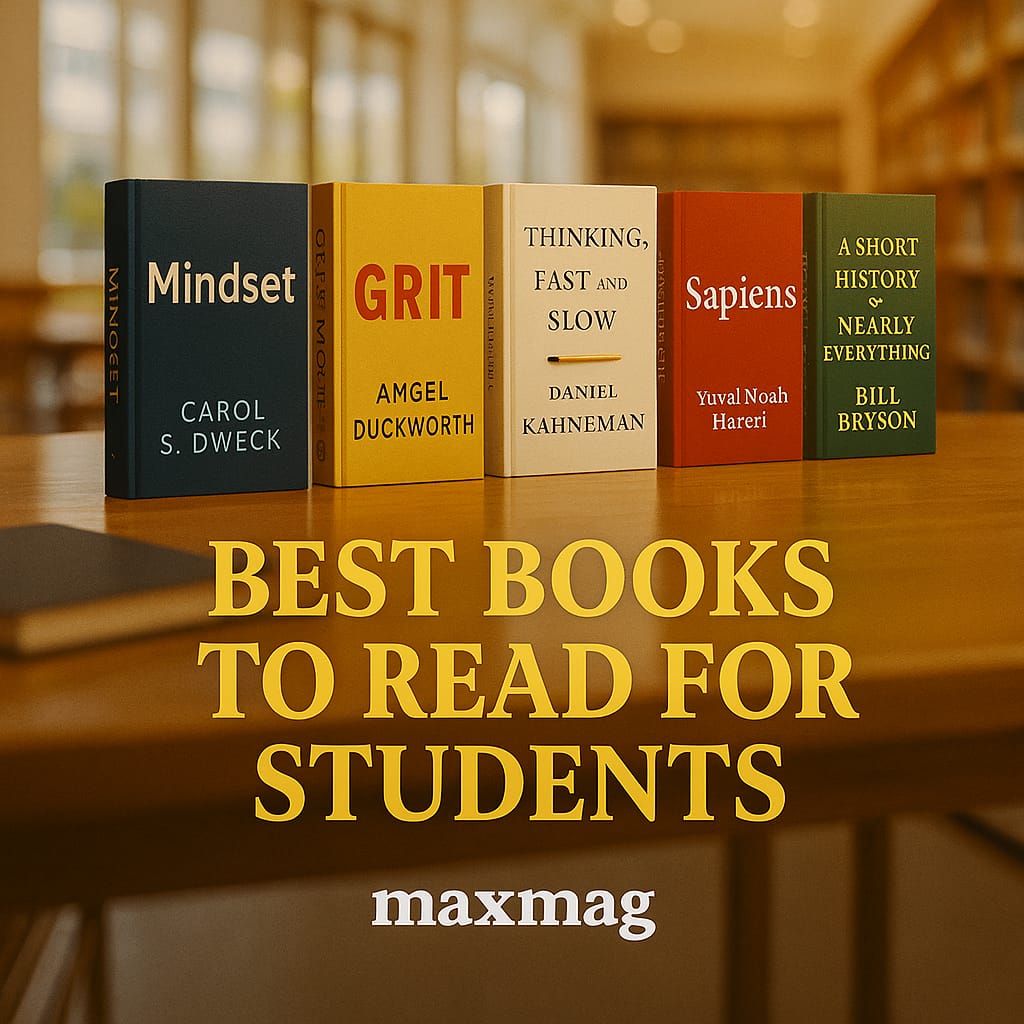
9. Educated – Tara Westover (2018)
- Genre: Memoir
- Pages: 334
- Themes: Learning, independence, self-discovery, resilience
- Ideal for: All students seeking motivation
- Key takeaway: Education is not what you’re taught—it’s what you dare to question.
Raised off the grid, Westover enters a classroom as though crossing a national border. Her voice is precise and unsentimental, chronicling love entwined with harm and loyalty with fear. Self-study becomes rebellion; a battered textbook becomes passport and shield. The memoir wrestles with memory’s reliability, admitting fracture without abandoning truth. Professors, libraries, and mentors assemble into a new kind of family: chosen, rigorous, kind. Leaving home means losing languages—religious, regional, familial—then learning to translate grief. Education emerges as an ethical practice: to see clearly, even when it hurts. For students, it proves that curiosity can reroute a life, mile by difficult mile. It’s widely recommended as one of the best books to read for students.
10. The Midnight Library – Matt Haig (2020)
- Genre: Fantasy / Philosophical Fiction
- Pages: 304
- Themes: Regret, choice, self-acceptance, destiny
- Ideal for: Students reflecting on mental health
- Key takeaway: The meaning of life lies in living it fully, not perfectly.
Between life and death, Nora explores books that contain every unlived version of herself. Haig treats regret as data, not indictment, transforming failure into curiosity. Alternate careers, cities, and loves shimmer with promise, then reveal ordinary compromises. The library keeper is part therapist, part librarian, guiding without dictating meaning. The novel resists toxic positivity, honoring grief while refusing despair its throne. Momentum returns through small decisions—calls returned, instruments tuned, walks taken at dusk. Purpose emerges as practice, not epiphany; a life is edited, not switched out wholesale. For students, it’s a gentle blueprint for rebuilding when choices feel overwhelming. It also appears on many modern classics for students.
11. Wonder – R.J. Palacio (2012)
- Genre: Young Adult Fiction
- Pages: 320
- Themes: Kindness, empathy, acceptance, courage
- Ideal for: Teen readers and educators
- Key takeaway: Kindness is a quiet revolution that reshapes the world.
Auggie’s first day at school asks classmates to decide: stare, avoid, or engage. Multiple narrators reveal biases and bravery, mapping the social physics of hallways and lunch tables. Palacio dignifies difference by granting every character interior life and capacity to grow. Small acts—sitting together, defending a friend—recalibrate the culture more than grand speeches. Parents and teachers stumble, then model repair, showing how communities actually change. Humor punctures sentimentality, keeping honesty vivid and emotions earned. The novel equips readers to notice, include, and intervene long before policy catches up. For students, it’s an operating manual for everyday empathy in public spaces. It’s widely recommended as one of the best books to read for students.
12. A Man Called Ove – Fredrik Backman (2012)
- Genre: Contemporary Fiction
- Pages: 337
- Themes: Loneliness, grief, renewal, humanity
- Ideal for: Students exploring psychology or literature
- Key takeaway: Even the coldest hearts thaw in the warmth of connection.
Ove’s rules keep chaos at bay—until messy neighbors crash through his routines with casseroles and care. Backman choreographs slapstick and sorrow, turning crankiness into a mask for unarticulated grief. Flashbacks reveal a tender marriage that once ordered his world like a well-kept tool bench. Community accumulates by increments: driving lessons, a stray cat, a shared emergency. The comedy never trivializes pain; it metabolizes it into acts of service and belonging. Masculinity, here, is reimagined as reliability, craftsmanship, and quiet devotion. By the final pages, the neighborhood reads like family—arguing, laughing, showing up. For students, it’s a case study in how kindness re-engineers a life.
13. The Seven Husbands of Evelyn Hugo – Taylor Jenkins Reid (2017)
- Genre: Literary / Historical Fiction
- Pages: 389
- Themes: Identity, fame, sacrifice, truth
- Ideal for: Students of media, film, or gender studies
- Key takeaway: Reinvention is the most radical form of honesty.
Evelyn invites a little-known journalist to record the definitive version of her scandalous life. Hollywood glitters, but the novel’s heart beats in private bargains struck to survive its gaze. Each marriage is less romance than strategy, a rung on the ladder or a shield from exposure. Reid interrogates the cost of image-making for women who refuse to be small or silent. Queerness threads the narrative, not as twist but as truth long forced off camera. Fame amplifies love and loneliness alike, turning intimacy into a negotiation with risk. The confessional frame asks whose story gets archived—and at what moral price. For students, it’s a meditation on authorship of the self in a spectacle economy. It’s widely recommended as one of the best books to read for students.
14. Where the Crawdads Sing – Delia Owens (2018)
- Genre: Mystery / Literary Fiction
- Pages: 384
- Themes: Isolation, nature, survival, prejudice
- Ideal for: Environmental and literature students
- Key takeaway: Solitude can be a classroom where resilience learns to speak.
Abandoned as a child, Kya learns tide charts and bird calls before she learns human trust. Owens renders marshland as cathedral—every feather, shell, and current a lesson in belonging. A small-town murder trial casts the wild girl as suspect, exposing the town’s reflexive cruelty. Romance offers tenderness and peril, testing whether love can bridge class and education. Scientific curiosity becomes Kya’s passport, turning observation into livelihood and dignity. The novel’s structure braids coming-of-age with courtroom drama, each tightening the other. Nature reflects her inner weather: storms, migrations, the patient return of light. For students, it models how environment shapes identity—and how knowledge can set one free. It also appears on many student self-improvement books.
15. The 5 AM Club – Robin Sharma (2018)
- Genre: Self-Help / Personal Growth
- Pages: 336
- Themes: Productivity, discipline, mindset, purpose
- Ideal for: Ambitious students and emerging leaders
- Key takeaway: Own your morning to elevate your life.
Sharma wraps habit science in a fable about artists, entrepreneurs, and a mysterious mentor. The 20/20/20 formula—move, reflect, grow—turns dawn into a daily operating system. Morning solitude becomes a competitive advantage, protecting deep work from digital noise. Practicality rules: journaling prompts, focus blocks, and recovery cycles translate ideas into action. The book insists greatness is environmental—design your day and your day designs you. Skepticism is anticipated; the narrative shows consistency beating intensity over time. Students find that small, repeatable wins compound into confidence and craft. It’s less a miracle hour than a mindset: stewardship of attention is the new wealth. It’s widely recommended as one of the best books to read for students.
16. Atomic Habits – James Clear (2018)
- Genre: Self-Improvement
- Pages: 320
- Themes: Behavior, systems, consistency, growth
- Ideal for: Students optimizing performance and focus
- Key takeaway: Tiny changes, remarkable results—systems beat goals.
Clear reframes success as architecture: environment, cues, and feedback loops do the heavy lifting. Identity-based habits switch the focus from outcomes to the kind of person you practice becoming. The four laws—make it obvious, attractive, easy, satisfying—translate research into steps. Plateaus and relapses are normalized; the antidote is iteration, not self-reproach. Examples range from athletes to artists, proving universality across disciplines. For students, habit stacking and temptation bundling turn willpower into design. The book’s humility—no hacks, just processes—makes it unusually durable advice. Mastery emerges from showing up, measuring honestly, and adjusting with kindness.
17. The Psychology of Money – Morgan Housel (2020)
- Genre: Finance / Psychology
- Pages: 256
- Themes: Wealth, behavior, risk, time
- Ideal for: Students starting financial literacy
- Key takeaway: Financial success is a behavior, not an IQ test.
Housel argues that money decisions are stories we tell about fear, luck, and enough. Compound interest is framed not as math but as patience—time doing quiet, miraculous work. The richest returns come from avoiding ruin; survival is the first investment strategy. Envy and social comparison corrode judgment; personal goals beat public applause. Case studies show fortunes built and lost by temperament more than spreadsheets. Students learn to respect tail risks, humility, and the dignity of conservative choices. Wealth is what you don’t see: the freedom created by options, not objects. The book invites a lifelong stance—calm, curious, skeptical—toward markets and self. It’s widely recommended as one of the best books to read for students.
From Reflection to Action: Next steps with the best books to read for students
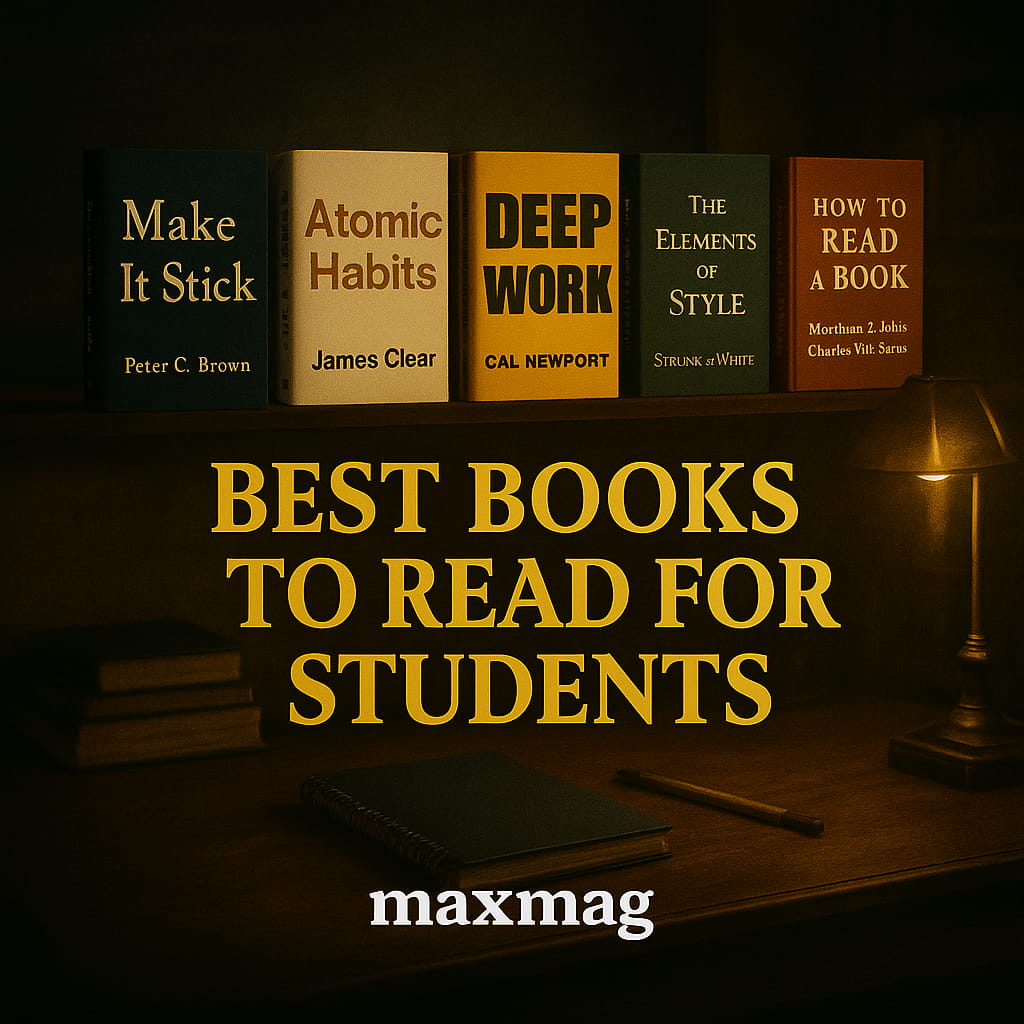
18. Quiet – Susan Cain (2012)
- Genre: Psychology / Sociology
- Pages: 333
- Themes: Personality, leadership, creativity, belonging
- Ideal for: Introverts, educators, team builders
- Key takeaway: Introversion is a strength—different, not lesser.
Cain maps the “Extrovert Ideal” that dominates classrooms and offices, often muting deeper voices. Research and portraits reveal how quiet minds incubate innovation away from the spotlight. She distinguishes shyness from introversion, untangling fear from preference for solitude. Practical strategies help students and teachers design participation that isn’t one-size-fits-all. The book champions restorative niches—corners where energy and focus quietly reset. Famous creators—from Rosa Parks to programmers—illustrate diverse leadership styles. For extroverts, empathy grows; for introverts, permission to thrive arrives at last. The result is a blueprint for teams where listening competes successfully with loud. It also appears on many best nonfiction for students.
19. Thinking, Fast and Slow – Daniel Kahneman (2011)
- Genre: Nonfiction / Psychology
- Pages: 512
- Themes: Decision-making, bias, judgment, reasoning
- Ideal for: Students in science, business, policy, design
- Key takeaway: Your brain has two engines; learn when to trust each.
Kahneman names our mental workhorses: fast, intuitive System 1 and slow, analytical System 2. He catalogs biases—anchoring, loss aversion, availability—that warp everyday choices. Experiments read like detective stories, exposing shortcuts built into perception. The book is less self-help than self-audit, urging environments that compensate for bias. Statistics and stories partner to show why confidence often outpaces accuracy. Students learn to design checklists, defaults, and friction that upgrade decisions. Humility emerges as the rational posture when certainty feels delicious. It’s a lifetime reference for thinking about thinking—clear, unsettling, essential. It’s widely recommended as one of the best books to read for students.
20. Sapiens: A Brief History of Humankind – Yuval Noah Harari (2011)
- Genre: Nonfiction / History
- Pages: 498
- Themes: Civilization, evolution, myths, technology
- Ideal for: Curious students across disciplines
- Key takeaway: Shared stories built empires—and still run the world.
Harari tours 100,000 years in a brisk, provocative voice that invites argument as much as awe. Cognitive, agricultural, and scientific revolutions are recast as software updates for our species. Money, nations, and rights are treated as collective fictions with real consequences. The book’s sweep links biology to bureaucracy, protein to politics, hunger to history. Ethical questions simmer: progress for whom, at what cost, and by which metrics? Students exit with a wider lens and sharper skepticism toward inevitability myths. It’s a springboard to debate—footnotes for a thousand essays and late-night talks. Agree or bristle, you’ll think bigger about how humans became this strange and powerful.
21. The Power of Habit – Charles Duhigg (2012)
- Genre: Psychology / Productivity
- Pages: 371
- Themes: Motivation, routines, change, culture
- Ideal for: Students and teams seeking better systems
- Key takeaway: Change the cue–routine–reward loop, change the outcome.
Duhigg decodes the habit loop, showing how cues trigger routines that chase familiar rewards. From athletes to CEOs, stories demonstrate behavior engineered more than willed. Keystone habits cascade benefits—small changes that remodel whole lives or organizations. Willpower is treated as trainable, not mystical, expanding the toolbox beyond grit. Data meets narrative, making neuroscience legible without thinning its rigor. Students can map study patterns and social media spirals with actionable clarity. Culture itself behaves like a habit, yielding to cues and leaders who reshape them. The result is pragmatic optimism: systems can be rewritten—and so can we. It’s widely recommended as one of the best books to read for students.
22. Born a Crime – Trevor Noah (2016)
- Genre: Memoir / Biography
- Pages: 304
- Themes: Identity, race, language, resilience
- Ideal for: Students of culture, history, and comedy
- Key takeaway: Humor can smuggle truth past the guards of power.
Noah grows up mixed-race in apartheid’s aftermath, illegal by the logic of the law. His mother’s ferocious faith and wit anchor a story equal parts danger and delight. Languages become passports; code-switching becomes survival, then stagecraft. Crime and comedy share timing—close calls teach improvisation and empathy. The memoir refuses pity, choosing precision and punchlines over easy sentiment. Systems of segregation are mapped through buses, schools, markets, and meals. Students glean how narrative reframes trauma without erasing its stakes. It’s joyous, searing, and sly—proof that laughter can indict and uplift.
23. The Martian – Andy Weir (2011)
- Genre: Science Fiction
- Pages: 387
- Themes: Innovation, survival, problem-solving, optimism
- Ideal for: STEM students and creative thinkers
- Key takeaway: Solve one problem, then the next—ingenuity is hope with a plan.
Stranded on Mars, Mark Watney becomes botanist, engineer, and comedian of the void. Weir’s meticulous science turns potatoes, duct tape, and orbital math into page-turning drama. Log entries make isolation intimate, converting panic into checklists and checklists into lifelines. International teams on Earth simulate solidarity, proving science is a global dialect. Failure is iterative; explosions are lessons; humor keeps oxygen in the narrative. The planet is merciless but never malevolent—indifference that clarifies human purpose. For students, it’s a hymn to curiosity, grit, and the beauty of collective problem-solving. You’ll finish believing that optimism is not mood but method. It’s widely recommended as one of the best books to read for students.
24. The Light We Carry – Michelle Obama (2022)
- Genre: Memoir / Self-Help
- Pages: 336
- Themes: Resilience, empowerment, community, balance
- Ideal for: Students seeking grounded confidence
- Key takeaway: Strength grows when shared; steadiness is a practiced craft.
Obama offers tools for staying centered when the world tilts—craftsmanlike, practical, humane. Stories of parenting, partnership, and public life become templates for private steadiness. She reframes vulnerability as connection, giving permission to ask and to receive help. Rituals—walks, small projects, trusted circles—anchor purpose without spectacle. The voice is warm but unsentimental, resisting slogans in favor of lived detail. Students will recognize the pressure to perform and the relief of setting humane metrics. Leadership appears as listening, consistency, and service more than spotlight. It’s a companion for seasons of uncertainty, generous and usefully specific.
25. Tomorrow, and Tomorrow, and Tomorrow – Gabrielle Zevin (2022)
- Genre: Literary Fiction
- Pages: 401
- Themes: Friendship, creativity, ambition, grief
- Ideal for: Artists, designers, and anyone who builds things
- Key takeaway: Collaboration is a love story—complicated, creative, and costly.
Two college friends make video games that outgrow their dorm rooms and, eventually, their innocence. Zevin renders code, art, and commerce as a single choreography of obsession and care. Success enlarges fault lines—identity, credit, desire—testing the tensile strength of partnership. The narrative time-jumps with gamer logic, swapping lives and levels to reveal hidden motives. Loss reshapes their work, turning grief into mechanics and story into solace. Side characters matter; studios behave like families, with all the beauty and fracture that implies. For students, the novel models creative stamina as empathy married to craft. It’s tender, nerdy, ambitious—the rare book that understands how people make art together. It’s widely recommended as one of the best books to read for students.
Conclusion
Across university faculties, the best books to read for students offer perspective as much as skill. Psychology majors will find insight in Quiet and Thinking, Fast and Slow, while engineering and computer science students can draw inspiration from The Martian and Sapiens for systems thinking. Business and economics readers benefit from The Psychology of Money and Atomic Habits to connect behavior and performance, and humanities or literature students deepen empathy through The Kite Runner, The Book Thief, and The Road. Those in social sciences and education may favor The Help, Wonder, and Educated for their studies on justice and transformation, while design and media students gain perspective from The Seven Husbands of Evelyn Hugo and Tomorrow, and Tomorrow, and Tomorrow. Each of these titles anchors classroom theory in lived experience, proving that curiosity, not coursework, determines how deeply we learn. For further evidence on reading trends, see who doesn’t read books in America (Pew Research Center), and for cognitive research on deep reading, review close‑reading effects on the brain (Stanford University).


